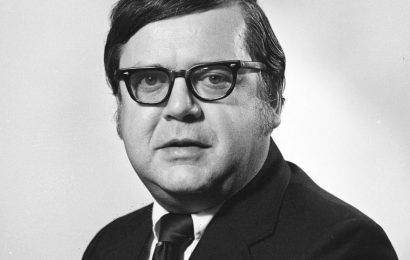PARIS — The message was strong and swift, coming just hours after Naomi Osaka skipped a post-match news conference: If she did not start showing up for questioning, tennis officials would kick her out of the French Open, and perhaps out of Wimbledon, the United States Open and the Australian Open, as well.
Current and former tennis executives said the decision to take a hard line had been influenced by the need to have all players abide by the same rules and by the sport’s battle to maintain media coverage in an era of shrinking news budgets and intense competition from other forms of entertainment.
At a moment when the organizations that own the game’s most prestigious tournaments are trying to manage the loss of hundreds of millions of dollars during the pandemic, the last thing they needed was for the most prominent young player in the sport to make her media appearances optional. Such a move could jeopardize the free global publicity their events and the game receive four times a year, as well as the television ratings and the value of media deals that such exposure can generate.
“There’s a connection between interest in the sport and exposure to the biggest names in the game,” said Chris Widmaier, the chief spokesman for the United States Tennis Association. “Do I think it affects television ratings? Yes. Do I think it affects interest in the game itself and casual play? Absolutely.”
On Tuesday, two days after the threat to expel Osaka and a day after she withdrew from the French Open, the four biggest tennis tournaments, known as the Grand Slams, issued another joint statement. They commended Osaka for coming forward about her struggles with mental health, and they offered support and pledged to work to improve the players’ experience at their events. The statement also stressed the need to maintain a fair playing field, “regardless of ranking or status. Sport requires rules and regulations to ensure that no player has an unfair advantage over another.”
It was a rare moment of unity for the leaders of the Grand Slams. But critics, including some of the biggest names in sports, such as the N.B.A. star Stephen Curry, have blasted tennis officials for threatening such a draconian penalty, criticism that has increased since Osaka’s withdrawal from the tournament and her revelation about bouts of depression.
At the moment, tennis needs all the exposure it can get. Its four biggest stars — Serena Williams, Roger Federer, Rafael Nadal and Novak Djokovic — are in their mid to late 30s and closer to the end of their careers than the beginning. Osaka, 23, who was raised largely in Florida but represents Japan in competition, is the closest thing the sport has to a new, worldwide star.
The sport generates roughly $2 billion a year, but only the top 100 or so men and women are able to make money playing tennis. Players have begun pressing for more say in how the game operates and divides its revenues, and pushing the leaders of the sport to find ways to generate more income.
In much of the world, but especially in the United States, coverage of tennis has been an easy line item for traditional media companies to cut in recent years. Major regional news outlets, such as The Miami Herald, no longer send their reporters to the Grand Slams, even though they used to be a regular presence at Wimbledon, the sport’s most important championship.
The pandemic has only accelerated the cycle. A spokesman for the French Open said the tournament had received just 500 requests for writers’ press credentials this year, compared with roughly 800 in 2019. The New York Times was the only major U.S. news outlet to send journalists to the Australian Open this winter.
Widmaier said credential requests for the U.S. Open had dropped to about 1,150 from a high of 1,500 a decade ago. South Florida newspapers used to send three journalists and now often send none. California newspapers used to account for a half-dozen credentials, but now might take one.
ESPN, which began exclusively televising the U.S. Open in 2015, has usually averaged a little more than a million viewers for each telecast. But last year, during a tournament held without spectators that many of the top stars skipped, television ratings for the U.S. Open on ESPN fell 47 percent. Osaka ended up winning the women’s singles championship.
Donald Dell, a founder of the men’s tour, the ATP, and a longtime agent and tournament promoter, said media access to the biggest stars is essential for the promotion of any sport, and vital to engaging its most loyal fans.
“Access creates name recognition, so when you say Osaka or Federer or Nadal is playing in a tournament it enhances the ratings,” Dell said. “When Serena loses a final when she is going for the record for Grand Slams, it’s no fun to go into a news conference, but it is part of the sport and part of trying to build a bigger sport.”
It can also have a direct effect on the bottom line. Sponsors often pay millions of dollars in part to have their names on banners behind top players at news conferences and to have their products, such as a bottle of water or an energy drink, next to the microphones in front of the athletes. If players do not have to attend those news conferences, the value of those deals could drop significantly.
More broadly though, increasing player exposure is at the center of a plan that Andrea Gaudenzi, chief executive of the ATP Tour, has tried to put forward to increase interest in tennis. Gaudenzi, a former player, wants players to become the subjects of documentaries like “The Last Dance,” the recent ESPN series about Michael Jordan and the Chicago Bulls.
“We have to work harder,” Gaudenzi said in an interview last year, long before Osaka raised the issue of mental health in connection with the media obligations that come with being a global star. “We are sort of undervalued in visibility.”
Source: Read Full Article







